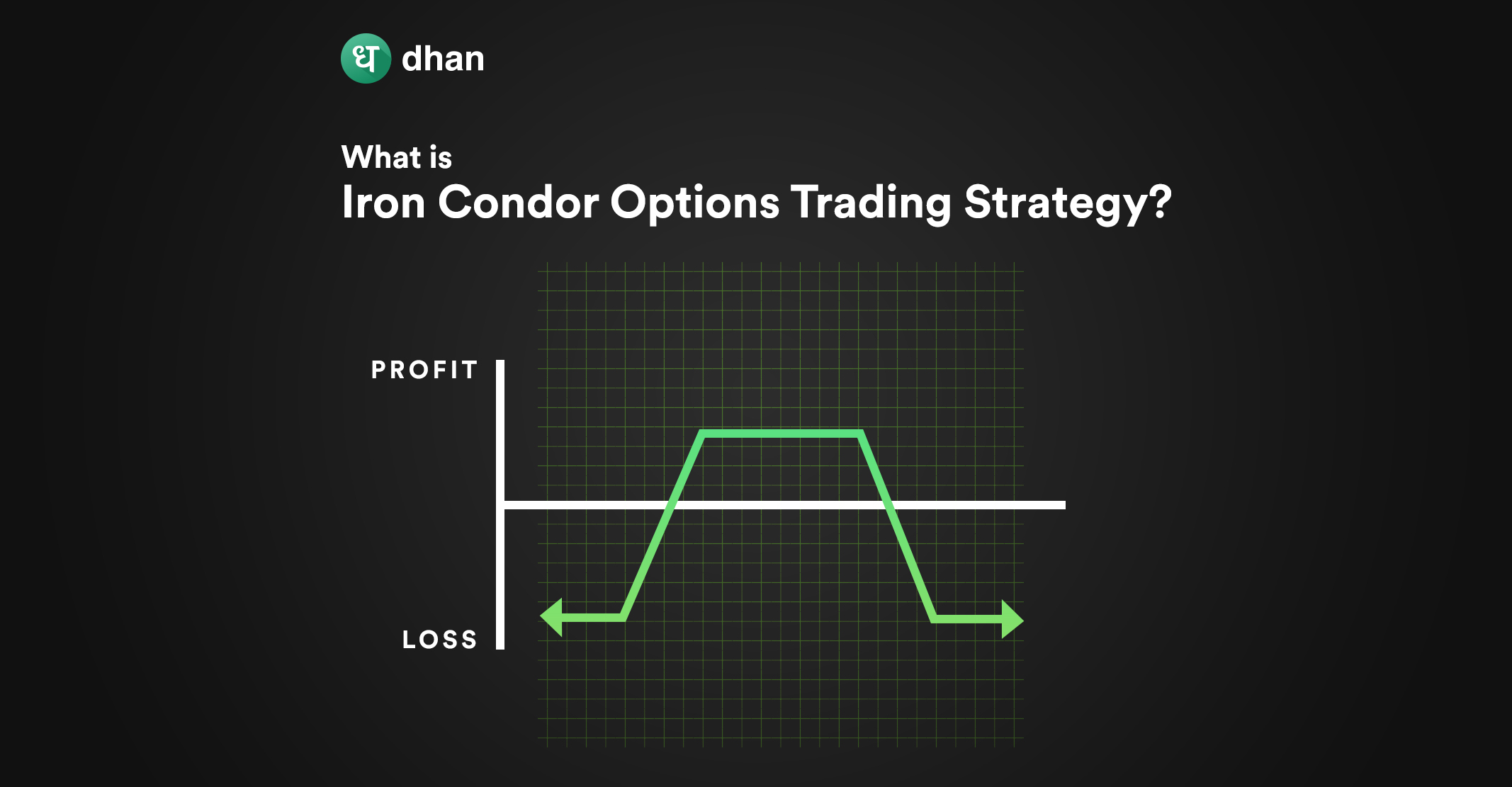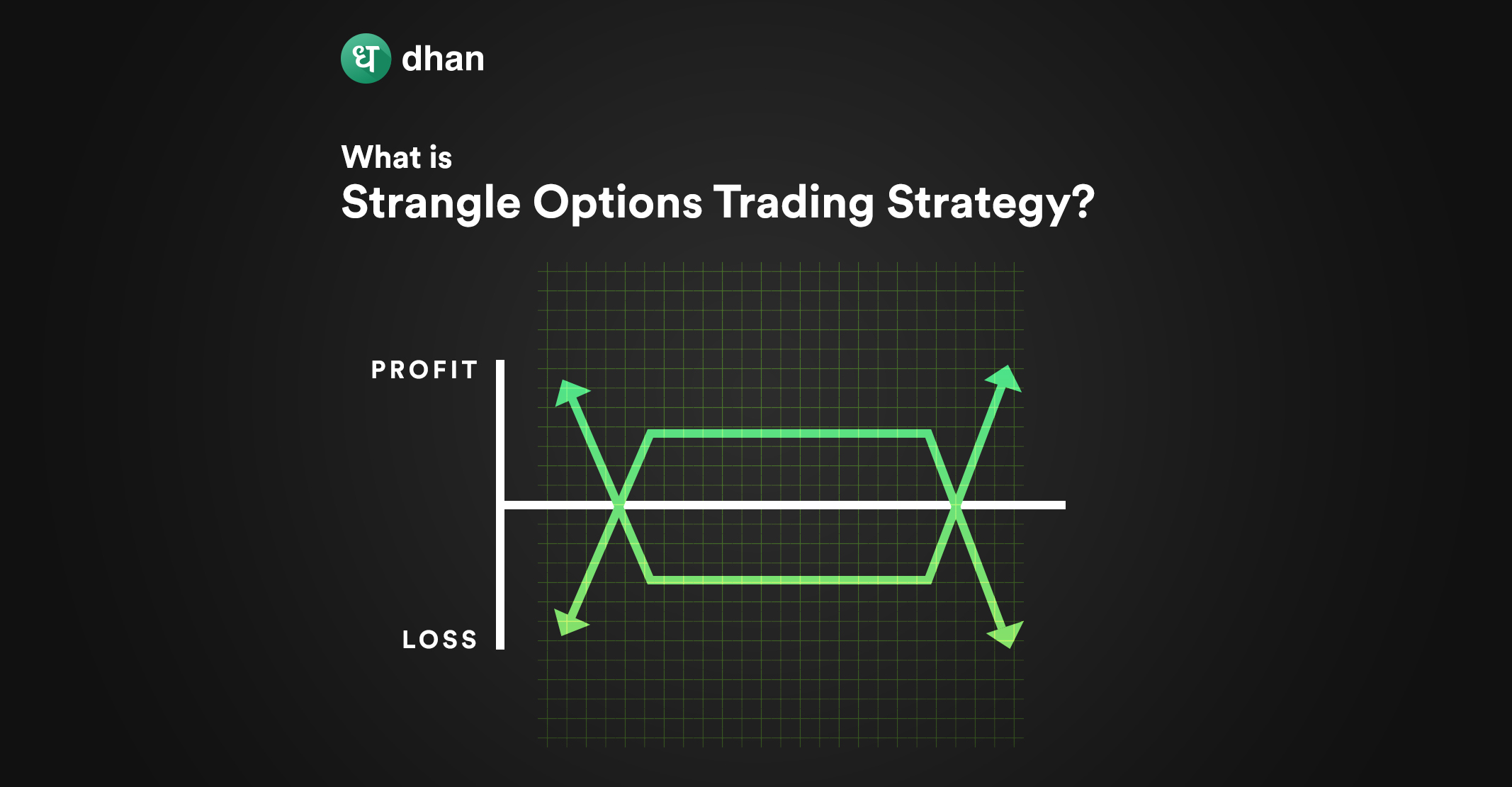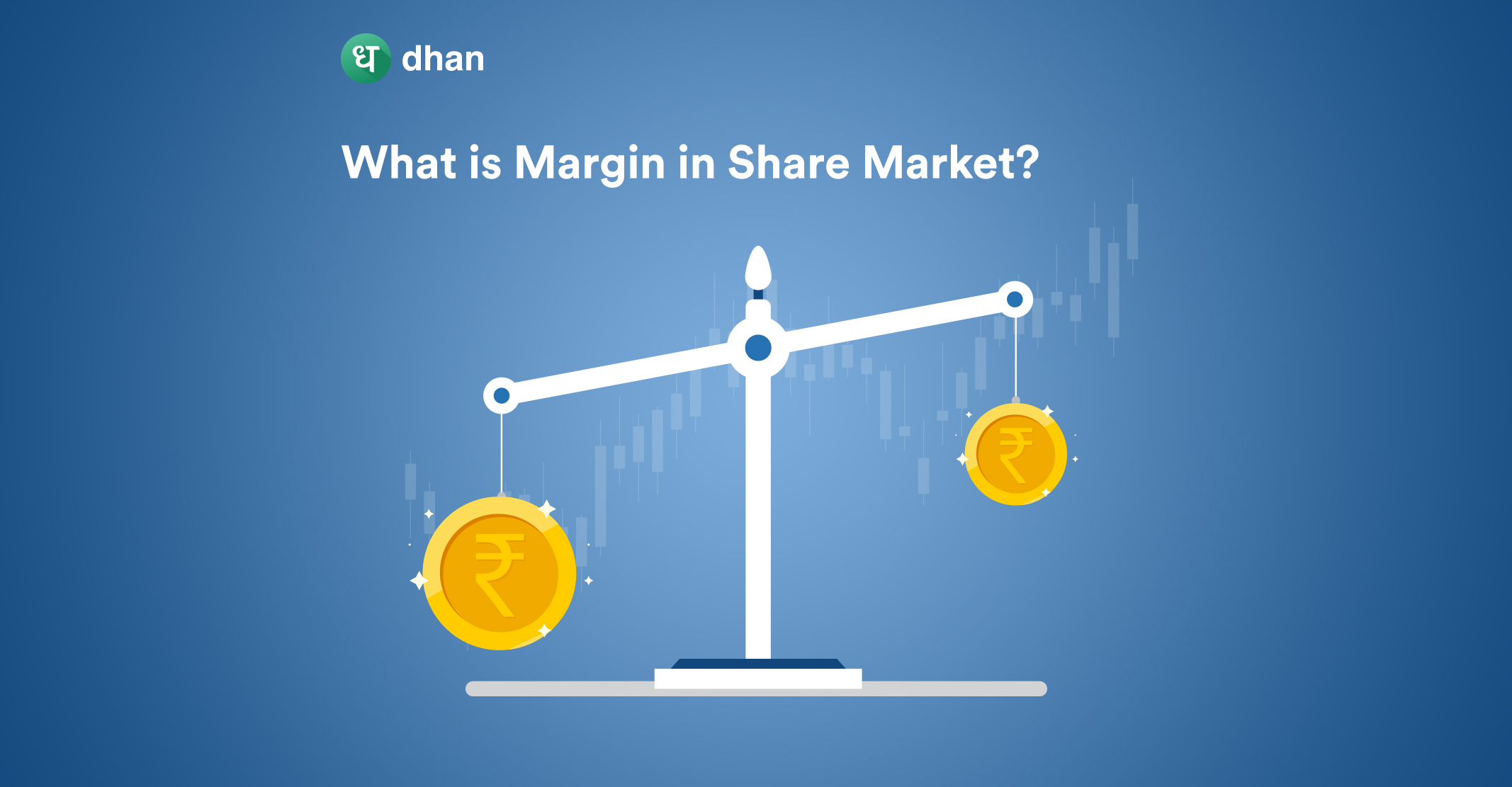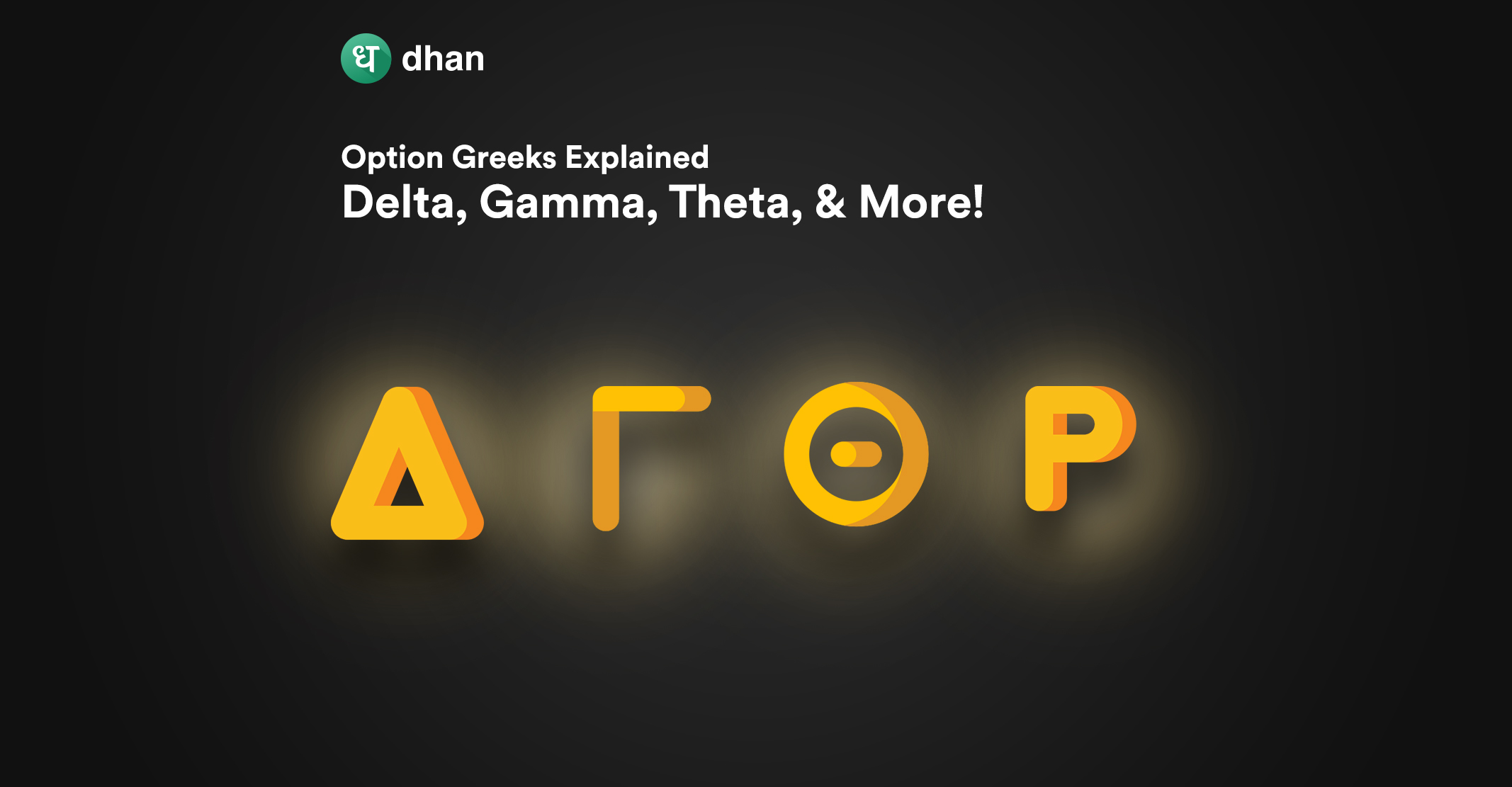Imagine if a financial security expires worthless, you get to take home a decent profit. Sounds whacky, right? But it’s not imaginary – this is real and widely used in the world of options trading. In fact, the options trading strategy has a name – Iron Condor Strategy.
What is Iron Condor Strategy?
The Iron Condor is a neutral options trading strategy that consists of four options contracts with four different strike prices but the same expiry. Unlike other strategies that use either calls or puts, Iron Condor uses both.
All four options contracts are split into two calls (short and long) and two puts (short and long). Jog back to a couple of lines before this and you’ll notice that all these four types of options have different strike prices. This is by design.
First, check out the pay-off graph below.
A: Strike price of OTM Put bought.
B: Strike price of ATM/OTM Put sold.
C: Strike price of OTM call sold.
D: Strike price of ATM/OTM call bought.
Your profit potential will be at its peak if the Iron Condor settles in the middle (B & C). This also means that the four strike prices will move from high to low, limiting your upside but also ensuring that your downside is similarly low.
The interesting part? You’ll want all four options contracts to expire worthless so that you start off with money acquired through premiums in your account right off the bat and don’t end up paying commissions after the Iron Condor ends.
How Does Iron Condor Strategy Work?
You can initiate an Iron Condor by buying four options contracts that are as follows:
1. Buy OTM Put: Strike price below the underlying’s Current Market Price (CMP).
2. Buy OTM Call: Strike price above the underlying’s CMP.
3. Sell ATM/OTM Put: Strike price close to underlying’s CMP.
4. Sell OTM/OTM Call: Strike price above underlying’s CMP.
Essentially, your Iron Condor will be a combination of a Bull Put Spread and a Bear Call Spread. Buying the OTM call and put is a risk management technique. The OTM call is in place to mitigate any unforeseen upside movement.
Similarly, the OTM put works as a risk mitigator against any unforeseen downside movement. These long OTM contracts carry a lower premium as they’re close to expiry. What do you get out of this? Profits.
The options that you’ll sell will carry a higher premium.
Go on to subtract the premium you’ll pay to buy the two options, you’ll be at a profit (already). This is the beauty of the Iron Condor Strategy – it manages potential upside and downside in such a way that you start off with a win.
That said, the size of your win will be affected by the strike prices of contracts B and C. A smart trader will ensure that the strike price is a standard deviation or two away from the CMP of the underlying while initiating an Iron Condor.
Moreover, time decay will be one of your best friends when using the Iron Condor. That’s why most traders turn to the strategy when the contracts are closer to expiry, say, 30 days before. Tap here to read about ATM/OTM/ITM Options!
Profit and Loss Outcomes of Iron Condor Strategy
The Iron Condor may be a neutral strategy that limits the upside and downside. But the thing is, there’s still some upside or downside involved every time you use the Iron Condor Strategy. Let’s explore both these scenarios in more detail.
Scenario #1: Profit
You’ll be at a profit when the Iron Condor options contracts expire worthless or out of the money and the difference between the premiums received and paid is positive. Implied volatility also enters the frame.
Scenario #2: Loss
The long and short condors need not always end up out of the money. There’s a risk of loss when the price of the underlying is more than the strike price of the long call. Loss is also possible when the price of the underlying is below the strike price of the long put option.
Either way, it’s always important to manage your risk using a solid trading setup, a reliable options trading platform, and tools like Trader’s Control, Trailing Stop Loss, and others.
Conclusion
An options trader will typically turn to the Iron Condor Strategy in order to earn surefire premiums, all while bearing in mind that the strategy can lead to a small upside with potentially limited downside.
In a way, the Iron Condor is an extension of the Iron Butterfly Strategy, which we will cover in a blog post soon. Meanwhile, you can read these blogs:



